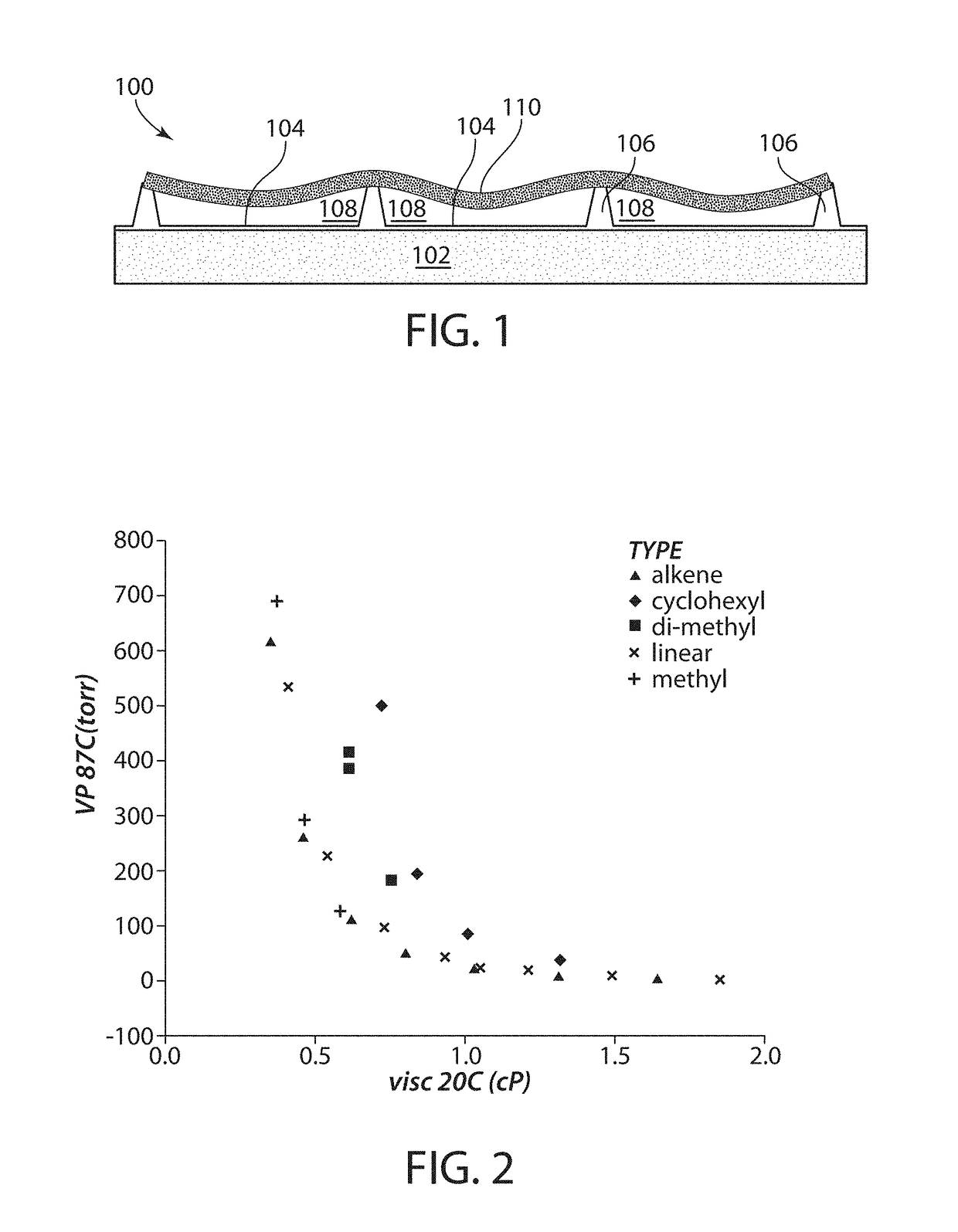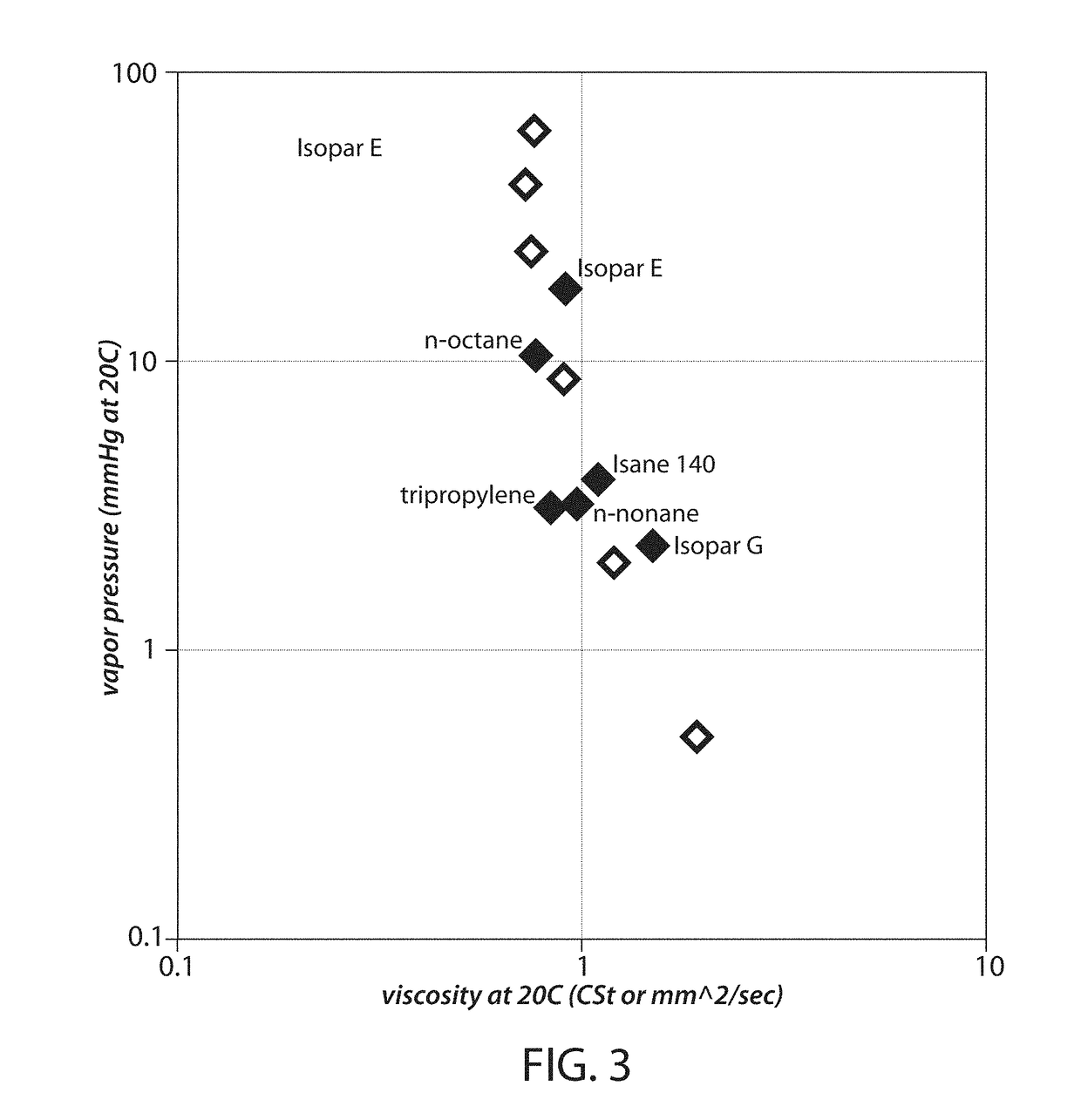Electrophoretic medium
a technology of electrophoretic medium and medium, applied in non-linear optics, instruments, optics, etc., can solve the problems of preventing their widespread use, inadequate service life of these displays, and the number of desirable criteria for such fluids, so as to increase the bistability of the medium
- Summary
- Abstract
- Description
- Claims
- Application Information
AI Technical Summary
Benefits of technology
Problems solved by technology
Method used
Image
Examples
Embodiment Construction
[0049]As indicated above, the present invention provides an electrophoretic medium comprising a plurality of charged particles disposed in a fluid, wherein the fluid comprises at least about 75 percent by weight of a hydrocarbon selected from the group comprising monounsaturated nonenes, nonane and methyloctane. It has been found that this relatively narrow class of hydrocarbon fluids provide a nearly ideal combination of low conductivity, low viscosity, and low vapor pressure. These fluids were chosen to give unexpected improvements to both vapor pressure and viscosity over electrophoretic fluids described in the prior art, and are particularly good choices for fluids in microcell media produced by a fill and seal process.
[0050]As already indicated, fluids for use in microcell electrophoretic displays need to possess low conductivity, low viscosity, and low vapor pressure. Low conductivity can be ensured using a hydrocarbon fluid. However, because vapor pressure and viscosity are i...
PUM
| Property | Measurement | Unit |
|---|---|---|
| weight | aaaaa | aaaaa |
| polarity | aaaaa | aaaaa |
| electric field | aaaaa | aaaaa |
Abstract
Description
Claims
Application Information
 Login to View More
Login to View More - R&D
- Intellectual Property
- Life Sciences
- Materials
- Tech Scout
- Unparalleled Data Quality
- Higher Quality Content
- 60% Fewer Hallucinations
Browse by: Latest US Patents, China's latest patents, Technical Efficacy Thesaurus, Application Domain, Technology Topic, Popular Technical Reports.
© 2025 PatSnap. All rights reserved.Legal|Privacy policy|Modern Slavery Act Transparency Statement|Sitemap|About US| Contact US: help@patsnap.com


